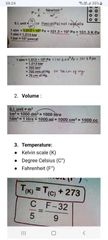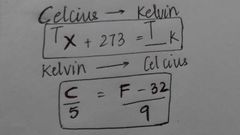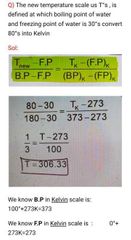![]()
![]()
![]()
Use LEFT and RIGHT arrow keys to navigate between flashcards;
Use UP and DOWN arrow keys to flip the card;
H to show hint;
A reads text to speech;
6 Cards in this Set
- Front
- Back
|
Gases |
1. Gases do not have fixed boundary of surface , shape and volume ( Gaes have less intermolecular forces so molecules cannot bind together so therefore no fixed boundary ) 2. Gases are more compressible as compared to liquids or solids ( Gases have more intermolecular distance so it is more compressed ) 3. The volume of gases readily decreases with increase in pressure ( imagine a sponge) 4.Gas molecules have high kinetic energy ( cuz randomness is more ) 5.Gases can be classified as • Monoatomic : He, Ar• Diatomic : N2 , SO• Triatomic : NO2 |
|
|
Parameter of gases |
( All of them are parameters in PV=nRT except R cuz it is the ideal gas constant) 1. Pressure 2. Volume 3. Temperature 4. Moles |
|
|
Parameters of gas |

1. Pressure: gases exert pressure due to collision of its molecules with the wall of its container 4. Moles: amount of gas represented in moles. |
|
|
Kelvin and Celsius scale |

|
|
|
New temperature scale |

Always use the highlighted formula for any new temperature scale formula. |
|
|
Gas laws |
1. Charles law ( P const) 2. Boyle's law 3. Gay-lussacs law 4. Avogadro law
Charles law: at a given constant pressure, the volume is directly proportional to temperature (in Kelvin) V=T ( in Kelvin)
Boyle's law: at a given constant temperature, the given amount of gas pressure is inversely proportional to the volume. PV=constant
Gay-lussac's law: at a given constant volume of a given amount of gas, pressure is directly proportional to it's Kelvin temperature. P=T ( in Kelvin).
Avagadro's law: Under similar condition of pressure and temperature equal volume of all gases contain equal number of moles and hence equal number of molecules ( atoms may be different ). V=n (only molecules). |

